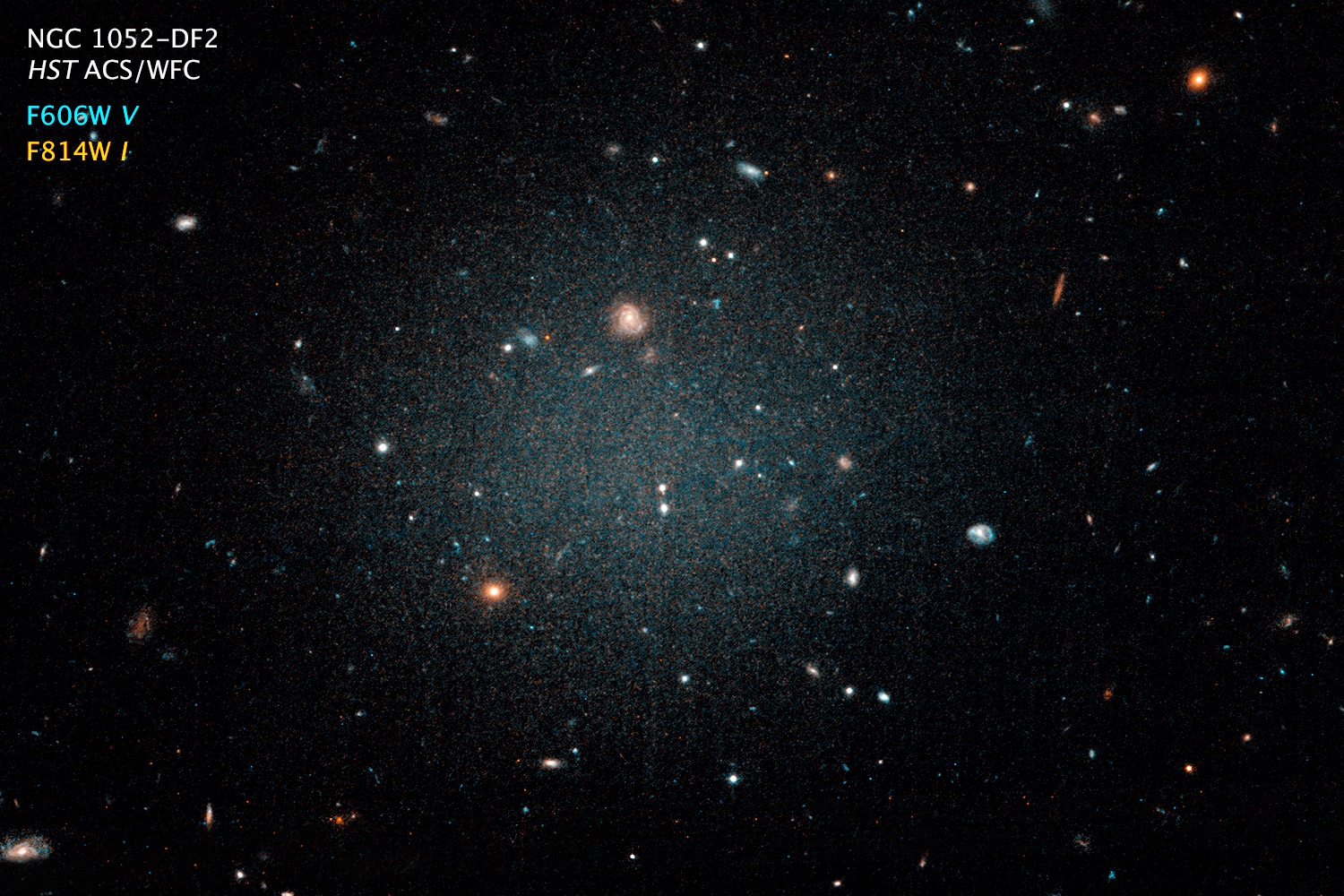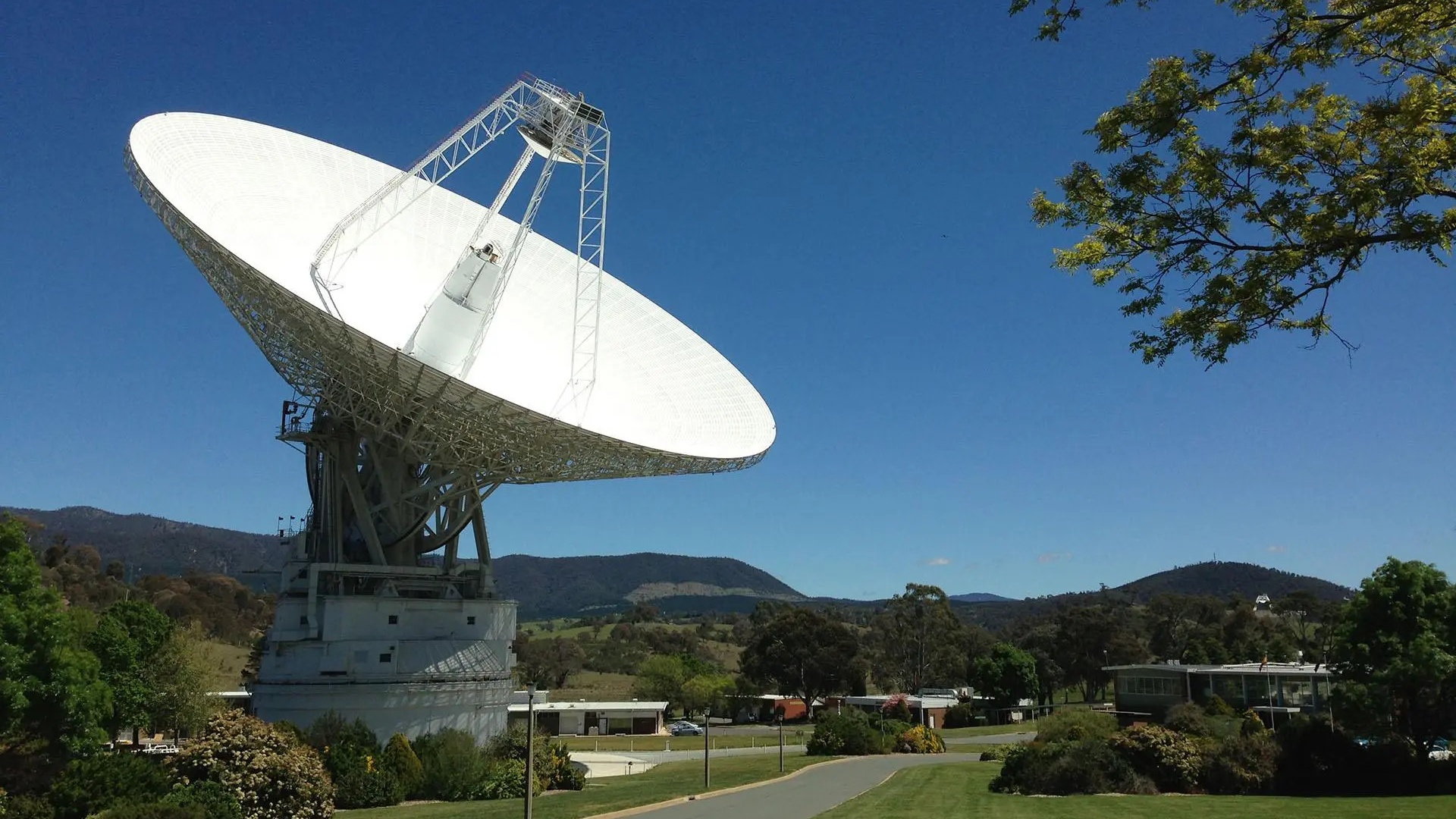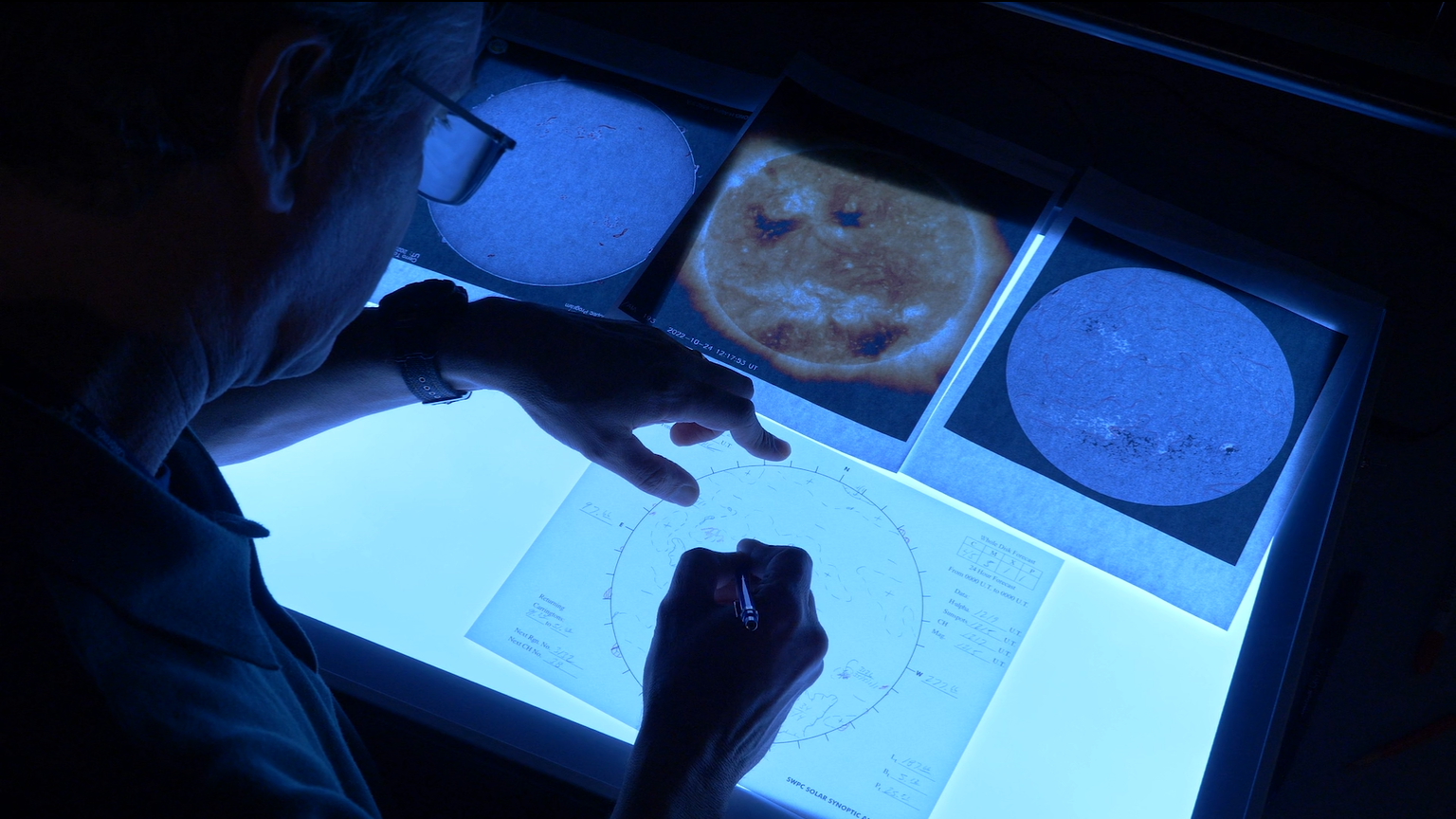Defying Theories, This Ghostly Galaxy Has Almost No Dark Matter
A unique galaxy is making the case for dark matter, even though it has very little of the mysterious substance. Astronomers have determined that the galaxy NGC 1052-DF2, or DF2 for short, has 400 times less dark matter than expected for an object of its size.
In addition to providing insight into how galaxies form, the unusual galaxy is helping strengthen the argument for the existence of dark matter, researchers said.
According to the new paper's lead author, Pieter van Dokkum, a researcher from Yale University, the galactic find challenges the standard idea of how galaxies are born. While interactions between normal and dark matter have long been considered a key element in galaxy formation, the dearth of dark matter in this galaxy challenges that assumption.
"Dark matter is apparently not a requirement for forming a galaxy," van Dokkum told Space.com by email. [Gallery: 65 All-Time Great Galaxy Hits]

Dark matter deficiency
Dark matter is a form of matter whose presence is discernable only through its gravitational interactions with baryonic, or "normal," matter. The unseen matter seems to make up roughly 80 percent of the mass of the universe and is thought to play a key role in galactic evolution.
The mysterious material is considered the scaffolding of the universe. Small bits of dark matter clump together to create the bones of the scaffold, growing larger over time. This growth is accompanied by the formation of stars from the gas and dust of the galaxy. According to NASA, the interaction of stars and galaxies within the dark matter is thought to have produced the galaxies astronomers observe today.
Get the Space.com Newsletter
Breaking space news, the latest updates on rocket launches, skywatching events and more!
But DF2 defies this idea. Van Dokkum and his colleagues were first drawn to the strange galaxy by a collection of 10 unusually bright compact objects orbiting around it. Using a combination of the light of the galaxy's stars and their color, the scientists measured how much normal mass could be found within the galaxy. They found that DF2 is about the size of the Milky Way but has about 200 times fewer stars.
The mass of the combined stars is about 200 million times the mass of Earth's sun, a unit known as a solar mass. The researchers then used the motion of the bright objects, classified as globular clusters, to calculate the total mass in the galaxy.
"For a galaxy with a stellar mass of about 200 million solar masses, we expect a dark matter mass of about 80,000 million solar masses," van Dokkum said. The total mass of the system, however, weighed in at no more than 300 million solar masses, significantly less than anticipated.
If dark matter is a key ingredient for galaxy formation, then how did DF2 form? The researchers suggested that DF2 could be an old tidal dwarf galaxy, formed from the gas cast out of other merging galaxies. DF2 lies not far from another elliptical galaxy that could have donated the material in a previous merge, the researchers said.
Another potential explanation is that winds blowing through the interstellar medium swept up enough gas to build the unusual galaxy, an explanation also strengthened by DF2's close neighbor. Material flowing in toward the neighboring galaxy could have fragmented as well, helping to form the unique object.
"We thought all galaxies were made up of stars, gas and dark matter mixed together, but with dark matter always dominating," Roberto Abraham, co-author on the study and a researcher at the University of Toronto, said in a statement. "Now, it seems that at least some galaxies exist with lots of stars and gas and hardly any dark matter. It is pretty bizarre."
The research was published online today (March 28) in the journal Nature.

A see-through galaxy
DF2 lies about 6.5 billion light-years from the Milky Way, one of several galaxies found within a galactic group. This galaxy is not a recent discovery, but its swarm of unusually bright globular clusters caught the eye of the researchers, who had been studying a class of galaxies known as ultra-diffuse galaxies. These faint galaxies, which include DF2, can be as large as the Milky Way but shine only 1 percent as brightly.
DF2 doesn't look much like other galaxies, according to the statement. Unlike spiral galaxies, it lacks a dense central region or the signature spiral arms. And unlike elliptical galaxies, it shows no sign of a central black hole. In fact, the ghostly, see-through galaxy is so sparse that the galaxies behind it are visible.
Globular clusters are spherical collections of stars orbiting their parent galaxies as satellites. They are fairly common for galaxies; more than 150 such objects orbit the Milky Way, while large galaxies like the nearby Andromeda may have more than 500.
Van Dokkum and Abraham have been investigating ultra-diffuse galaxies using the Dragonfly Telephoto Array, an instrument the pair designed to investigate faint astronomical objects. In 2015, the team used Dragonfly to spot an ultra-diffuse galaxy made up almost completely of dark matter. That's when the 10 unusually bright globular clusters orbiting the nebulous DF2 caught the researchers' eyes.
Stretching an average of 20 light-years across, the clusters shine far brighter than other similar objects, though they are about two times less dense than their fellow clusters. According to van Dokkum, "they are almost as bright as Omega Centauri, the brightest globular cluster in the Milky Way."
Despite that, their mass makes up a whopping 3 percent of the total mass of DF2, approximately 1,000 times more than globular clusters are expected to contribute.
A separate paper detailing the 10 globular clusters has been accepted for publication in The Astrophysical Journal Letters. Van Dokkum and his colleagues said they intend to continue studying the bright collections in further detail to confirm their connection with DF2. They will also continue the hunt for other ultra-diffuse galaxies that might resemble the unusual dark-matter-free galaxy.
The researchers said they suspect that the galaxy's dark matter deficit, the strange bright clusters and the galaxy's startling size are connected.
"It makes sense to think these unusual aspects are all related," van Dokkum said. "At this point, we don't know how, though."
Making the case for dark matter
Studies of galaxies in the 1950s first indicated that the universe contained more matter than could be measured with the naked eye. Measurements of the motions of galaxies and globular clusters have long suggested that these objects are spinning more rapidly than can be accounted for based on measurements of visible matter.
Ironically, although it is deficient in dark matter, DF2 may help argue the case for the existence of the unseen material. While most researchers seem to agree that dark matter dominates the universe, alternative explanations do exist. Modified Newtonian dynamics (MOND) proposes a modification of Newton's laws to account for the observed discrepancies. Emergent gravity is another idea that suggests that space-time is made up of small elements whose collective motion produces the force of gravity. The pair are the most dominant of several scientific proposals arguing against dark matter.
"In those theories, dark matter is not real but an illusion, caused by our lack of knowledge of gravity on large scales," van Dokkum said. "If that's the case, every galaxy should show a dark matter signature — it's not something you can turn on or off in those models."
Until the discovery of DF2, that has been the case. But the very existence of a galaxy with virtually no dark matter makes the case that these non-dark-matter models are incorrect, he said.
"Paradoxically, the absence of dark matter in this galaxy is evidence for [dark matter's] existence," van Dokkum said.
Follow Nola Taylor Redd at @NolaTRedd, Facebook or Google+. Follow us at @Spacedotcom, Facebook or Google+. Originally published on Space.com.
Join our Space Forums to keep talking space on the latest missions, night sky and more! And if you have a news tip, correction or comment, let us know at: community@space.com.

Nola Taylor Tillman is a contributing writer for Space.com. She loves all things space and astronomy-related, and enjoys the opportunity to learn more. She has a Bachelor’s degree in English and Astrophysics from Agnes Scott college and served as an intern at Sky & Telescope magazine. In her free time, she homeschools her four children. Follow her on Twitter at @NolaTRedd









